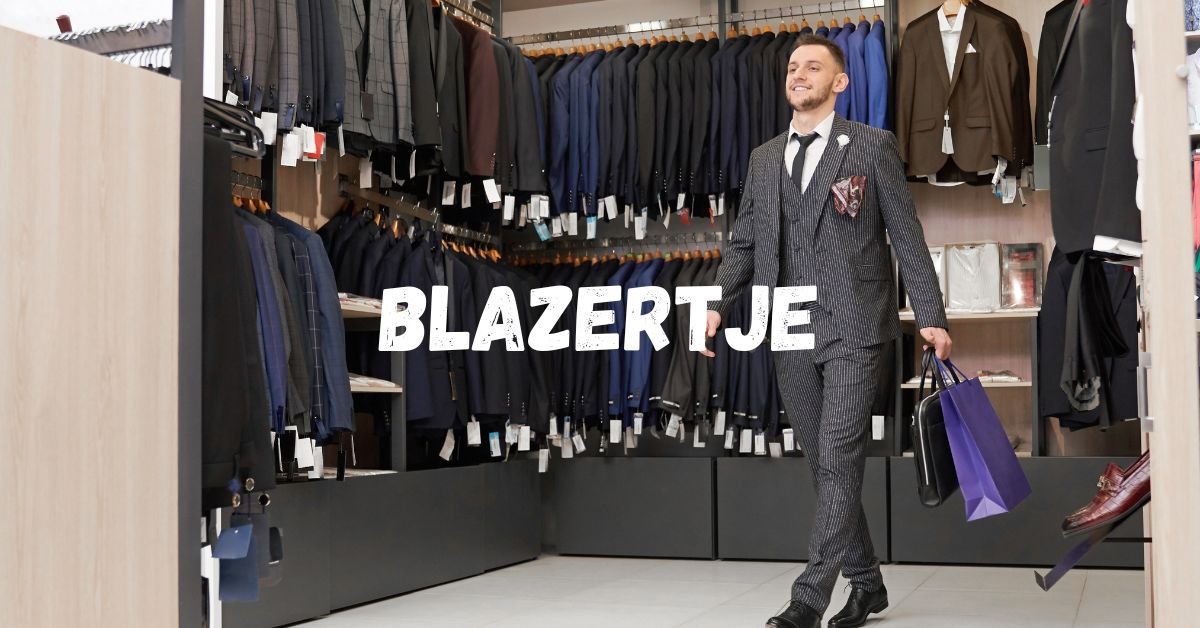
In Dutch, blazertje is the diminutive of “blazer,” used to describe a lighter, more casual blazer jacket that bridges everyday wear and business-casual style. Unlike a structured suit jacket meant to be worn with matching trousers, a blazertje is designed for versatility: it layers over jeans, chinos, dresses, or skirts and adapts to changing seasons through fabric choice (cotton, linen, wool blends, or technical fibers). The term reflects a broader European approach to smart-casual dressing, where a tailored silhouette is combined with comfort. Etymologically, “blazer” itself has deep roots in British fashion culture; the Oxford English Dictionary documents the noun blazer in English from the 17th century and traces later senses to sporting and club contexts—important background for understanding how the casual blazer evolved into today’s blazertje.
Culturally, nautical style helped popularize tailored jackets in civilian wardrobes during the 19th century. Museums of maritime history record how royal patronage and naval motifs influenced mainstream dress—context that helps explain why lightweight, unstructured blazers caught on far beyond formal uniforms. Royal Museums Greenwich, for example, highlights Queen Victoria’s role in sparking nautical fashion trends that diffused into general attire in the mid-1800s.
Key takeaways
-
Blazertje = a lightweight, casual blazer with everyday flexibility.
-
The blazer’s name and cultural influence have historical depth across clubs, sport, and nautical dress.
2) Historical Background of the Blazer
The blazer’s origin is commonly tied to 19th-century British club and rowing culture and to naval style. An authoritative strand of the story connects the term “blazer” to the scarlet jackets of Lady Margaret Boat Club (LMBC) at St John’s College, Cambridge—“blazers” that stood out for their blazing red color. St John’s official communications note the club’s distinctive red blazers and explicitly reference the association between the garment and the term “blazer,” which was recorded in late-19th-century press.
Alongside club culture, the broader popularity of nautical motifs in civilian dress expanded the appeal of tailored jackets. Royal Museums Greenwich documents how Queen Victoria’s endorsement of sailor-style dress in the 1840s catalyzed a wave of nautical fashion, helping normalize naval silhouettes and detailing in city clothing. This social diffusion royal court to wider society set the stage for semi-formal jackets to be worn outside strict uniform contexts.
The OED’s historical record shows “blazer” in English earlier than these club associations, which indicates the word’s meaning has layered over time; later senses in the 1800s align with the jacket we recognize today. Together, academic and museum sources suggest that the modern blazer emerged from overlapping influences: university and rowing clubs (with bold colors and piping), naval chic (buttons, stripes, blues), and the gradual relaxation of dress codes. These currents, reframed for comfort and everyday wear, underpin the contemporary blazertje.
3) Difference Between a Blazer and a Blazertje
A traditional blazer is a tailored jacket that sits between a suit jacket and a sport coat in formality. It often features structured shoulders, lining, and formal details (metal buttons, peak or notch lapels) and is usually made from worsted wool or heavier blends. A blazertje keeps the core silhouette but relaxes structure to prioritize comfort and versatility: lighter canvassing or none at all, partial lining or unlined construction, softer shoulders, and seasonal fabrics like cotton twill or linen for summer and brushed wool or knit blends for cooler months.
From a textile standpoint, fabric choice shapes performance:
-
Cotton offers breathability and easy care; it dominates global natural fiber markets and is extensively classified by technical properties (length, strength, micronaire) in official USDA systems—useful markers of durability and drape in casual jackets.
-
Wool regulates temperature and resists wrinkles; FAO reporting shows long-term dynamics in wool production relative to other fibers, reflecting availability and price considerations that influence what’s in stores each season.
-
Linen (flax) excels in moisture wicking and cool wear but wrinkles readily, which is why many blazertjes blend linen with cotton or viscose for balance, as described in university extension materials that profile fiber properties.
In practice: wear the blazer when you need sharper structure (presentations, semi-formal events). Choose the blazertje when you want polish with comfort and easy mixing across your wardrobe, especially for business-casual, travel, and weekends. (Sources above for fabric performance and markets.)
4) Fabrics and Styles of a Blazertje
Choosing the right blazertje starts with understanding fibers and construction:
Common fibers & what they mean
-
Cotton (and cotton blends): breathable, versatile, and widely available; the USDA tracks global cotton markets and details fiber classification criteria that drive quality and pricing for downstream apparel. Cotton’s strength and staple length influence how crisp or relaxed a casual blazer feels.
-
Linen (flax): excellent wicking and quick-drying, ideal for summer; wrinkles more than cotton, an inherent property noted in university extension guidance.
-
Wool (including lightweight worsted or tropical wool): naturally thermoregulating and resilient; FAO analyses show long-term shifts in wool relative to other fibers that affect seasonal supply and price.
-
Synthetics (polyester, nylon, elastane blends): add durability, stretch, and wrinkle resistance; university extension overviews summarize these fibers’ quick-drying and abrasion-resistant behavior—useful in travel-friendly blazertjes.
Construction & style notes
-
Unstructured or soft-shoulder builds create the hallmark casual drape.
-
Unlined or half-lined interiors improve breathability.
-
Seasonal weaves (seersucker, hopsack, twill) tweak airflow and texture.
For sustainability and safety, look for credible product labels. The EU Ecolabel for textiles sets science-based criteria on chemicals, durability, and environmental impact; the European Commission hosts criteria and factsheets that consumers and brands can consult. These frameworks help ensure a blazertje meets verified performance and environmental standards beyond marketing claims.
5) How to Style a Blazertje
A blazertje works because it simplifies smart-casual dressing. Use these evidence-informed, fabric-aware tips:
Men
-
Pair cotton or hopsack blazertjes with chinos or dark jeans and a breathable knit (polo or merino t-shirt).
-
For warm weather, linen blends mitigate heat; their wicking and quick-dry properties are well documented in extension resources—packable and easy to refresh after travel.
-
In cooler months, lightweight wool helps regulate temperature while resisting creasing during commutes. FAO’s long-view on wool underscores why lightweight wool remains a performance staple.
Women
-
Layer a soft-shoulder blazertje over midi dresses or high-rise trousers; elastane blends improve range of motion and wrinkle resistance—fiber characteristics summarized in university fiber overviews.
-
Use tonal dressing (e.g., beige linen blazer + ecru knit + tan loafers) to elongate the silhouette while keeping heat-friendly fabrics.
Universal pointers
-
Match formality to fabric: linen for relaxed settings; wool or structured cotton for meetings.
-
Respect care realities: where possible, choose pieces that can be cold-washed to reduce energy use and extend garment life—guidance supported by ENERGY STAR and U.S. Department of Energy resources on laundry energy and fabric care.





